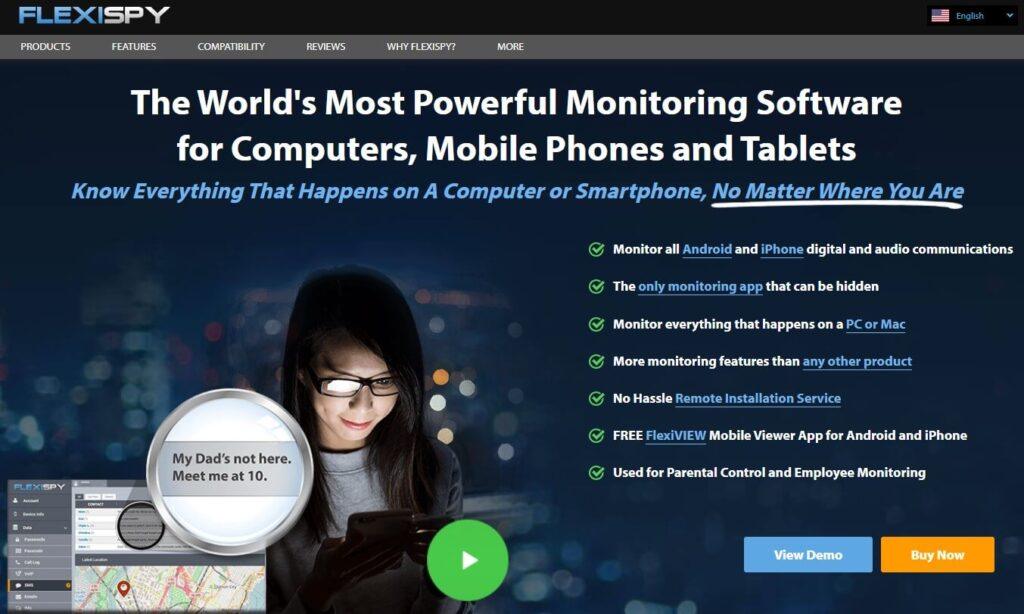As children’s digital lives grow more complex, many parents are looking for reliable ways to ensure their safety online. uMobix stands out as a prominent monitoring solution. But in 2025, with technology constantly evolving, will this uMobix review show it’s truly effective, or does it lean too heavily towards invasive surveillance? We’ve put it to the test to help you make an informed decision for your family.
This article provides an honest, hands-on assessment of uMobix’s features, usability, and overall value. Our goal is to give you the clarity needed to choose the right tool for digital safety.

uMobix at a Glance
Here’s a quick overview of uMobix’s core offerings and limitations:
| Aspect | Details |
|---|---|
| Pricing Range | $12.49 – $49.99/month |
| Free Trial | No |
| Devices per Subscription | 1 device |
| Communication Monitoring | Yes (texts, calls, deleted logs) |
| Social Media Tracking | Extensive on Android (20+ platforms) |
| Keylogger | Yes (Android only) |
| Location Tracking | Real-time (no geo-fencing, some inconsistency) |
| Content Filtering | Basic (manual website blocking) |
| Screen Time Management | No |
| Remote Control Actions | Block apps/Wi-Fi (Android) |
| Supported Devices | Android phones/tablets, iPhones/iPads |
What is uMobix? An Overview
uMobix is a mobile monitoring solution designed to give parents deep insight into their child’s smartphone and tablet activities. It boasts extensive data collection across various aspects of device usage.
Often marketed as a parental control tool, its comprehensive nature can sometimes blur the lines, leading many to question if it’s more akin to “spyware.”
uMobix Pricing & Subscription Plans
The cost of uMobix places it on the pricier side within the monitoring software market. Pricing varies significantly based on the subscription duration you choose.
While there’s no free trial for uMobix available, they offer monthly, quarterly, and yearly plans. The longer your commitment, the lower your effective monthly cost.
| Plan Duration | Price Per Month (Approx.) | Billing Frequency | Best For |
|---|---|---|---|
| 1-Month | $49.99 | Monthly | Short-term monitoring |
| 3-Months | $29.99 | Billed Quarterly | Moderate commitment |
| 1-Year | $12.49 | Billed Annually | Long-term value |
Note: Prices are approximate and may vary. Always check the official uMobix website for the most current pricing details.
Detailed Look at uMobix Features
uMobix offers an impressive array of monitoring capabilities, providing deep insight into various digital activities. Here’s a breakdown of its core features:
Communication Tracking
You can view all text messages sent and received, complete with content and timestamps. Call monitoring provides details on incoming and outgoing calls, including durations and contact information. For Android devices, uMobix also allows access to deleted call logs and messages.
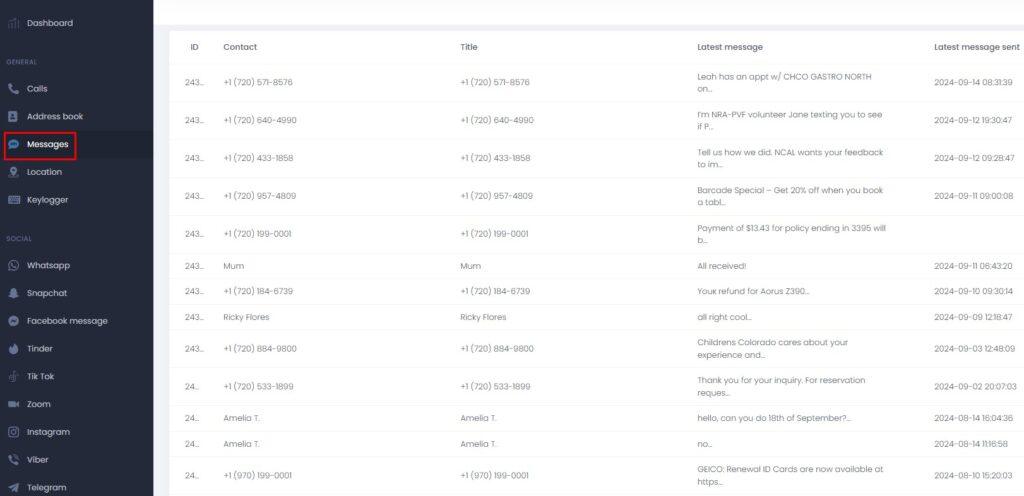
Social Media & App Monitoring
uMobix boasts extensive social media monitoring, especially robust on Android. It covers over 20 popular platforms like Facebook, Instagram, Snapchat, and TikTok. You can see direct messages, images, and videos. The uMobix app also tracks general app activity, showing which applications are used and for how long.

Location Tracking
The software provides real-time location tracking for both Android and iOS devices. While it shows your child’s whereabouts, our testing sometimes found its accuracy inconsistent. It currently lacks geo-fencing capabilities.
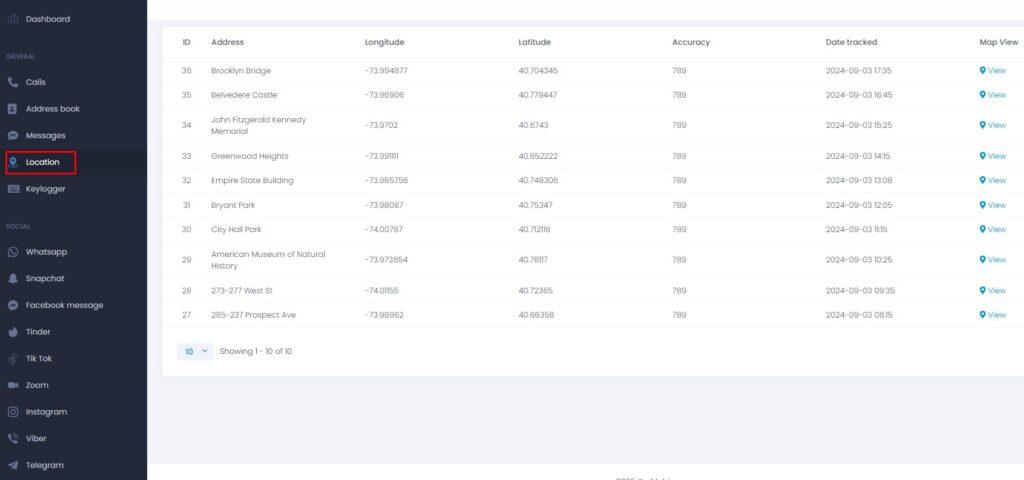
Keystroke Logging
A highly powerful, yet invasive feature is the keylogger, available on Android devices. This records every single keystroke made, capturing everything typed across all apps and messages.
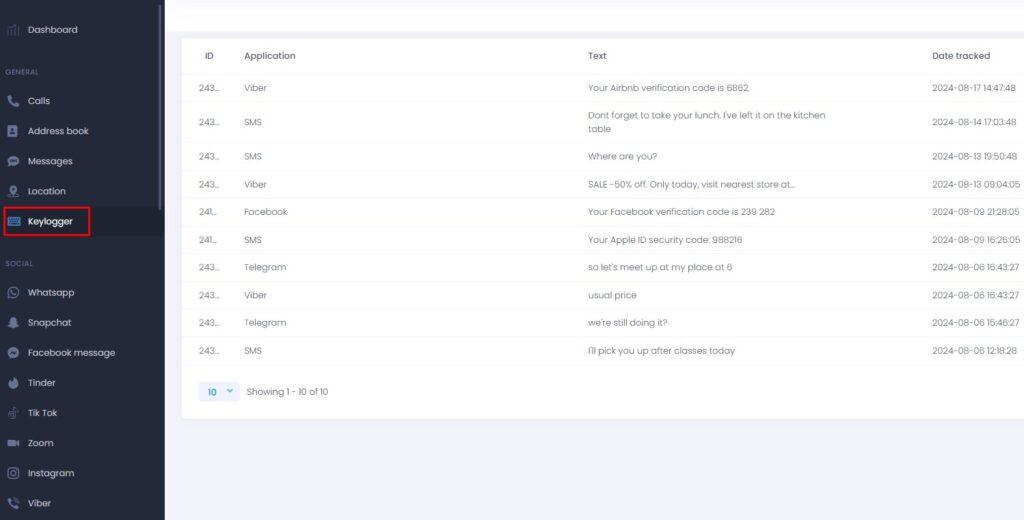
Web Browse & Content Filtering
uMobix monitors web browsing history across various browsers on Android. For content filtering, it offers basic functionality: parents can manually block specific websites. However, it lacks advanced category-based filtering or real-time alerts for inappropriate content.
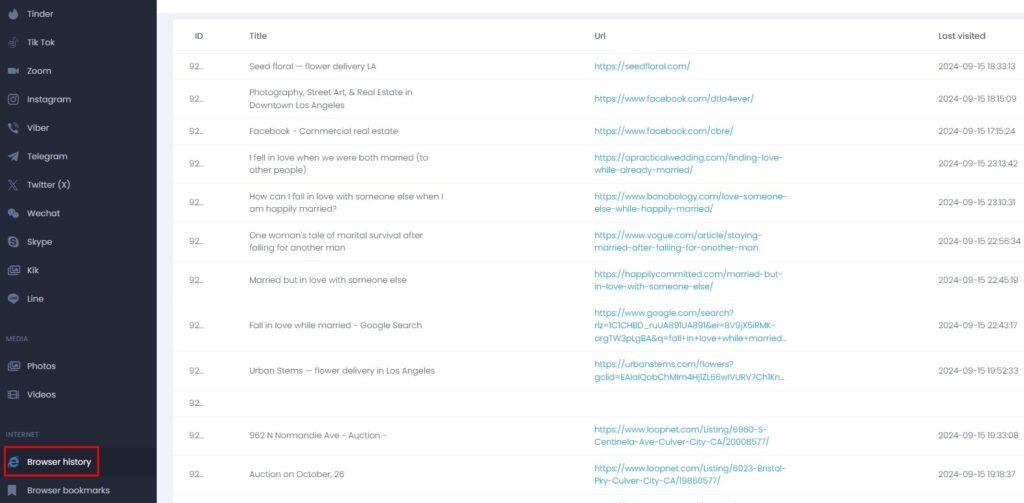
Media File Access
The tool also allows access to photos and videos stored on the target device, enabling parents to review media content directly.
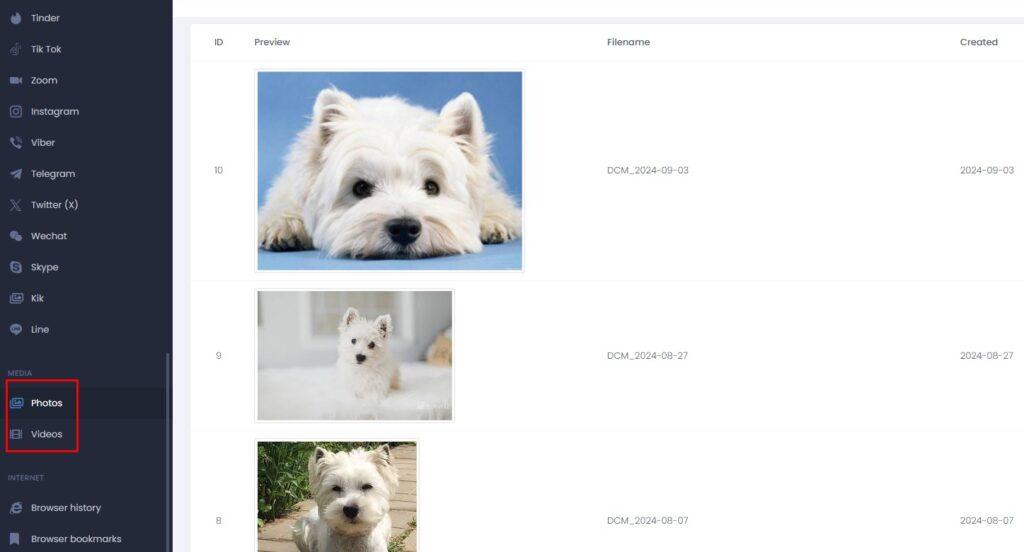
Our Hands-On Experience: The Reality of the uMobix App
We meticulously tested uMobix on both Android and iPhone devices to understand how uMobix works in practice. The installation process was certainly an eye-opener.
While uMobix provides detailed step-by-step instructions, particularly for Android devices (which often require direct installation), the iOS setup typically relies on iCloud login credentials. This approach felt quite invasive, given the high level of access and privacy implications involved.
Once installed, the uMobix app dashboard provided a vast amount of data. We could see browsing history, call logs, text messages, and an overview of app usage.
However, the experience wasn’t without frustrations. A major point was the app’s passive nature regarding alerts. Unlike many modern parental control solutions offering real-time notifications for concerning content, uMobix primarily relies on you actively checking the dashboard. If you’re not constantly logged in, you might miss crucial developments.
Another issue was the inconsistency of some features. Text message monitoring, though advertised for both platforms, proved unreliable on our iPhone test device. Similarly, location tracking, while real-time, sometimes showed significant inaccuracies.
Overall, the uMobix app functions more as a data aggregation tool than an active “control” system. You can block applications and Wi-Fi networks, and harmful websites on Android. But the level of granular control and proactive alerting we expect from top-tier parental control software isn’t there.
Is uMobix Legit? Insights from Trustpilot and Users
When considering a tool as intimate as a phone monitoring app, the question of its legitimacy naturally arises. Our assessment, based on features, leans towards it being a powerful monitoring solution, albeit one with a strong “spyware” feel due to its invasiveness and stealth mode.
However, examining uMobix reviews on platforms like Trustpilot paints a more complex picture. The uMobix Trustpilot feedback is quite mixed.
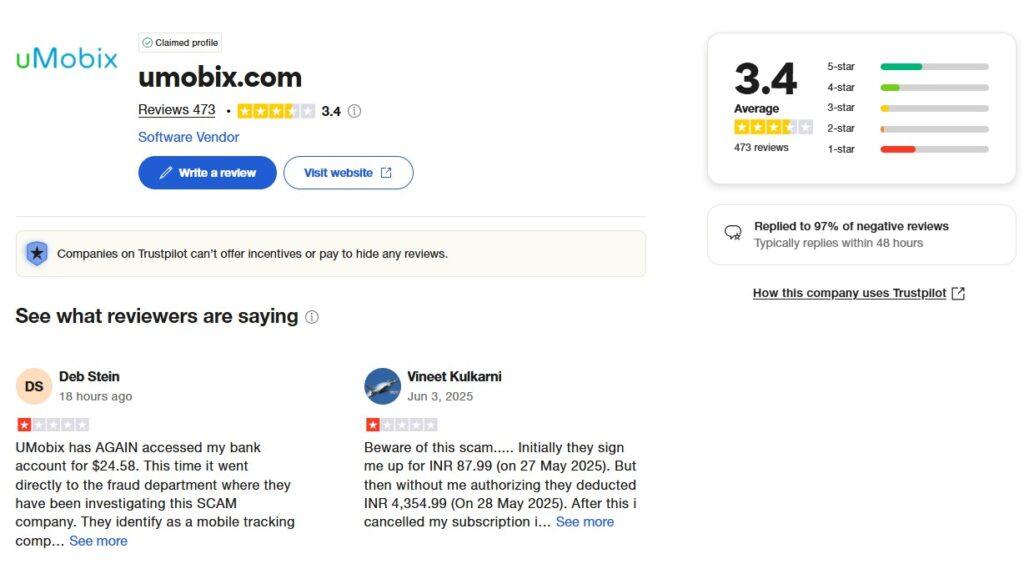
Some users praise its ability to track activities, citing responsive customer service and effectiveness in monitoring teens. They appreciate being able to see phone calls, messages, location, and social media.
Conversely, a significant portion of user feedback raises alarming issues, particularly concerning billing. Users report unauthorized charges, difficulty with refunds, and describe “scam” behavior, alleging access to bank accounts and personal data without permission. The absence of a direct phone number for customer support is also a recurring point of frustration. These discrepancies are crucial to consider.
uMobix Pros and Cons: A Balanced View
To help you weigh your options, here’s a summary of uMobix’s pros and cons:
Pros:
- Extensive social media, message, call, and web activity monitoring (strong on Android).
- Powerful Keylogger for all typed content (Android only).
- Designed for undetectable, stealth operation.
- Easy-to-navigate user dashboard.
Cons:
- More invasive “spy app” feel than traditional parental control.
- Lacks proactive alerts; requires constant manual checking.
- No dedicated screen time management.
- Higher price point for a single device.
- No free trial available.
- Frequent user complaints regarding billing, refunds, and generic customer support.
- Complex iOS installation with limited features compared to Android.
How to Install and Manage Your uMobix Subscription
Understanding how to install uMobix on a target phone is key, and the process differs between operating systems.
How to install uMobix on Android
For Android, installation typically requires direct access to the device. After purchasing your uMobix subscription, you’ll receive a link to download the uMobix app directly. You’ll then need to adjust some security settings to allow installation from unknown sources, following on-screen prompts to grant necessary permissions. This process is generally straightforward but needs physical access.
How to install uMobix on iPhone
Installing uMobix on an iPhone for full functionality often leverages iCloud credentials rather than direct app installation. You may need to disable two-factor authentication on the target iPhone’s iCloud account and provide the credentials to uMobix. This method allows data to be pulled from iCloud backups. For more advanced features, jailbreaking the iPhone might be suggested, which is a complex and risky process.
If you decide uMobix isn’t for you, knowing how to cancel a uMobix subscription is important. Typically, you would log into your uMobix account on their website, navigate to subscription settings, and find the cancellation option. Be mindful of their refund policy if you’re within the 14-day window.
To uninstall uMobix from a target device, the process varies: on Android, you’ll generally need to access the device’s application manager or settings, find the uMobix app (it might be disguised), and proceed with uninstallation. For iPhones, if installed via iCloud, there’s no app to uninstall from the phone itself.
uMobix vs. mSpy: A Quick Comparison
When exploring monitoring solutions, the “uMobix vs mSpy” comparison frequently comes up. Both are powerful tools, but they have distinct differences.
| Feature | uMobix | mSpy |
|---|---|---|
| Primary Focus | Deep data collection, social media (Android) | Comprehensive monitoring, parental controls |
| Keylogger | Yes (Android) | Yes (Android) |
| Geo-fencing | No | Yes |
| Real-time Alerts | Passive (manual dashboard check) | More proactive alerts available |
| Installation | Direct (Android), iCloud (iOS), Jailbreak (iOS) | Direct (Android), iCloud (iOS), Jailbreak (iOS) |
| Pricing | Higher end | Higher end |
| User Complaints | Mixed, with billing concerns highlighted | Mixed, some customer service/billing concerns |
Ultimately, the choice often depends on which specific features you prioritize and your comfort level with each app’s installation methods and overall approach.
- FlexiSpy Review 2025: Is It Still Worth Buying?
- mSpy Review 2025: Is It Worth It? Better Alternative Revealed
Famisee: A Brighter Alternative for Balanced Digital Parenting
While uMobix offers extensive monitoring, its “spyware” feel and lack of proactive controls can be a deterrent for parents seeking a truly balanced approach to digital safety. This is where alternatives like Famisee truly shine.

Famisee provides a robust suite of monitoring features, but it emphasizes proactive insights and a less intrusive feel, fostering healthier digital habits and more transparent communication.
Here’s what sets Famisee apart:
- It goes beyond basic message and call tracking, offering unrivaled in-depth monitoring for popular platforms like WhatsApp, Snapchat, Facebook, and Instagram. You can see disappearing messages, DMs, encrypted chats, view all text messages, call logs, and even record calls.
- Unlike passive dashboards, Famisee gives you immediate awareness. Features like Remote Camera Access and Live Screen Viewing let you see your child’s surroundings and screen activity as it happens. Crucially, Real-Time Message Alerts notify you instantly of concerning conversations, enabling timely intervention.
- Famisee also covers essential ground such as Real-Time Location Tracking, Browse History, and Photo/Video Monitoring. For the most complete oversight, its Keystroke Tracking feature captures everything typed on the device.
For parents who desire powerful monitoring combined with a more transparent and proactive approach to digital safety, Famisee offers a compelling and balanced solution.
Final Thoughts: Is uMobix Good?
Based on our comprehensive uMobix review for 2025, it’s clear that uMobix excels at deep monitoring and stealth operation, particularly for Android. However, it falls short on proactive alerts, screen time management, and user satisfaction regarding billing and support.
Ultimately, whether uMobix is the right choice depends on your specific needs. For a more balanced, transparent, and proactive approach to digital parenting, alternatives like Famisee present a compelling option.
John is a tech enthusiast and digital safety advocate with over 7 years of experience reviewing monitoring apps and parental control tools. He specializes in testing real-world app performance, privacy standards, and user experience. His mission is to help parents and employers choose trustworthy solutions for safer digital environments.

